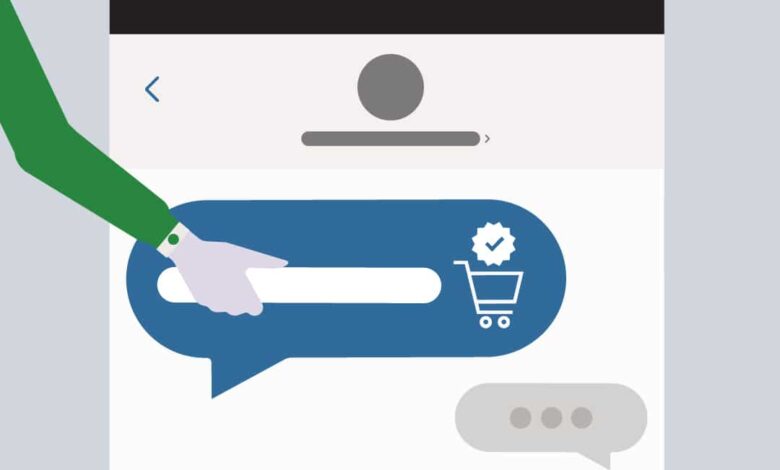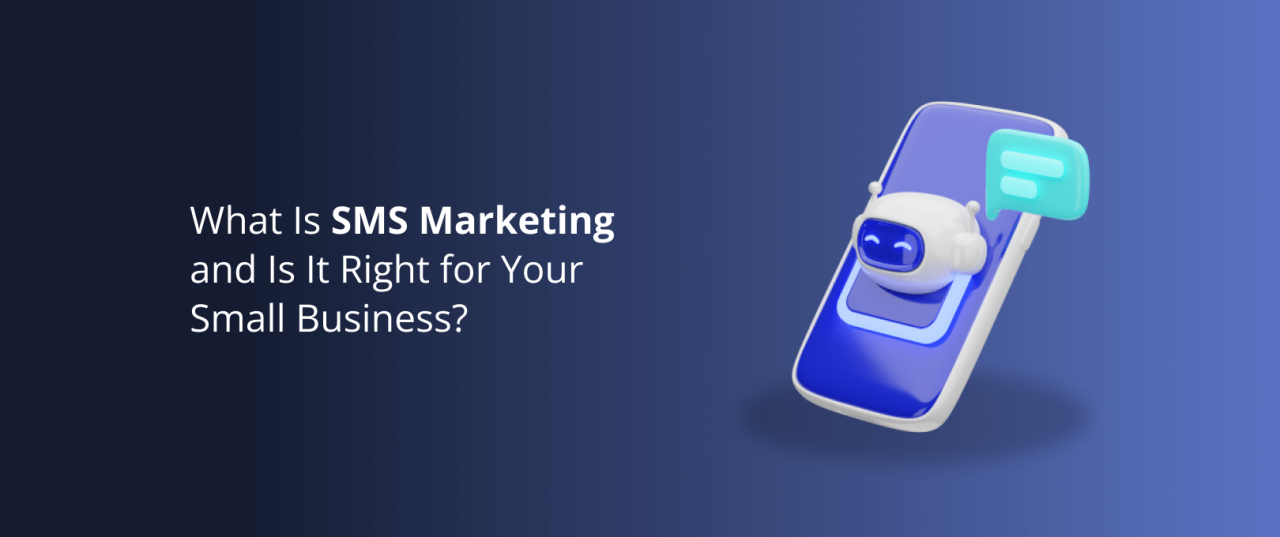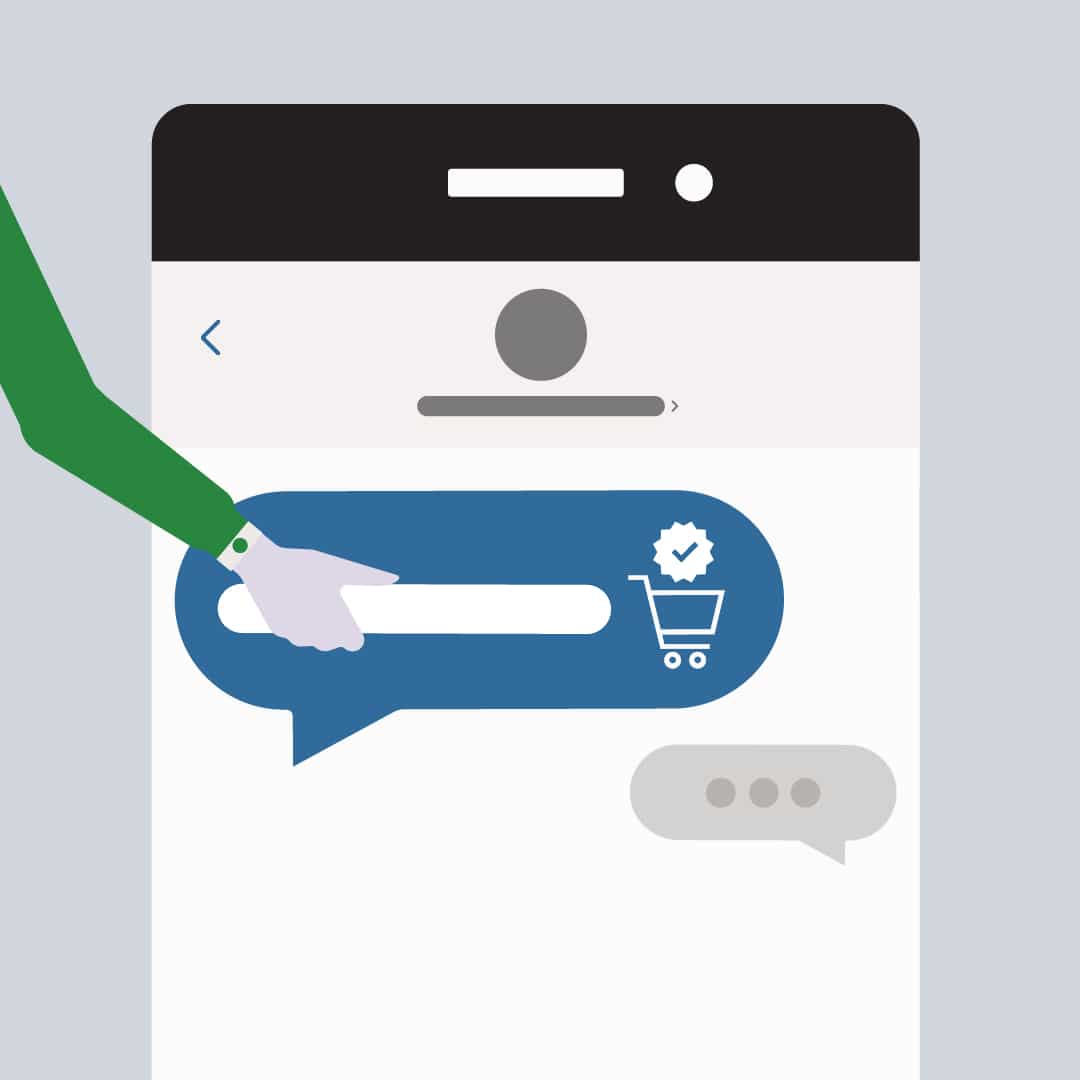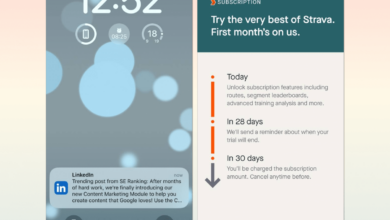
SMS Marketing Your Mobile Marketing Guide
SMS marketing is a powerful tool for connecting with customers directly on their mobile devices. It’s a dynamic approach to reaching your target audience with immediate impact, from promotional messages to crucial transactional updates. This comprehensive guide dives deep into the history, strategies, and future of SMS marketing, exploring its evolution and effectiveness across various industries.
This guide will walk you through the essentials of crafting a successful SMS marketing campaign, covering everything from building your subscriber list to optimizing your messages for maximum impact. We’ll also discuss the crucial legal and ethical considerations, plus the importance of a mobile-first approach to stay ahead of the curve.
Introduction to SMS Marketing
SMS marketing, also known as mobile marketing, is a powerful digital strategy that leverages short message service (SMS) to communicate with customers directly on their mobile phones. It’s a highly effective channel for reaching a wide audience, enabling businesses to engage in targeted communication, promotions, and updates. This direct connection fosters customer loyalty and drives significant business results.The historical context of SMS marketing is rooted in the rise of mobile phone technology.
As mobile phones became ubiquitous and SMS messaging gained popularity, businesses quickly recognized the potential for direct communication with consumers. Early adopters initially used SMS for simple transactional messages, like order confirmations or appointment reminders. However, the evolution of SMS marketing strategies has significantly expanded, allowing for more sophisticated interactions and personalized engagement.
Definition of SMS Marketing
SMS marketing encompasses all marketing activities that utilize SMS messages to reach customers. This includes sending promotional offers, transactional updates, appointment reminders, and other forms of communication. Its core strength lies in its direct, personal, and timely nature, making it a crucial element in modern customer engagement strategies.
Historical Context of SMS Marketing
The initial use of SMS marketing was largely transactional. Businesses used it for order confirmations, shipping updates, and account-related notifications. As mobile phone penetration increased, marketers began exploring the potential for promotional messaging, leading to the development of more sophisticated strategies. The emergence of mobile-optimized websites and applications further integrated SMS marketing into broader customer relationship management (CRM) initiatives.
Evolution of SMS Marketing Strategies
Early SMS marketing was primarily focused on broadcasting messages to large audiences. Over time, strategies evolved to include targeted messaging, personalized offers, and two-way communication. The introduction of mobile apps and location-based services enabled even more sophisticated targeting, allowing businesses to send messages based on customer location, purchase history, and other relevant data points. This has significantly enhanced the effectiveness of SMS campaigns.
Key Components of a Successful SMS Marketing Campaign
A successful SMS marketing campaign requires careful planning and execution. These are the key components:
- Clear Objectives: Defining specific, measurable, achievable, relevant, and time-bound (SMART) objectives is crucial for campaign success. These objectives should align with overall business goals and focus on quantifiable outcomes.
- Targeted Audience Segmentation: Segmenting the target audience based on demographics, purchase history, and engagement levels allows for more personalized and effective messaging. Tailoring messages to specific segments improves response rates and campaign ROI.
- Compelling Messaging: Crafting clear, concise, and compelling messages is vital. Messages should be easily understood, engaging, and valuable to the recipient. This includes effective use of calls to action and clear instructions.
- Permission-Based Approach: Obtaining explicit consent from recipients before sending messages is crucial for maintaining customer trust and complying with regulations. A permission-based approach ensures recipients are comfortable with receiving messages.
- Effective Tracking and Analysis: Monitoring key metrics like open rates, click-through rates, and conversion rates allows for continuous improvement and optimization of campaign performance. Analyzing data helps refine strategies for better results.
Basic Framework for an SMS Marketing Plan
A basic framework for an SMS marketing plan should encompass the following steps:
- Define Objectives: Clearly Artikel the goals of the SMS campaign, including desired outcomes like increased sales, improved customer engagement, or enhanced brand awareness.
- Identify Target Audience: Determine the specific customer segments to target with SMS messages, considering demographics, purchase history, and engagement levels.
- Develop Messaging Strategy: Create compelling messages that align with campaign objectives, considering the needs and preferences of the target audience.
- Implement and Monitor: Launch the SMS campaign and continuously monitor key performance indicators (KPIs) to track progress and make necessary adjustments.
- Optimize and Refine: Analyze campaign data to identify areas for improvement and optimize future campaigns for enhanced effectiveness.
Benefits and Advantages of SMS Marketing
SMS marketing, a direct channel to consumers’ mobile devices, offers a compelling array of advantages over traditional methods. Its immediacy, cost-effectiveness, and strong engagement capabilities make it a powerful tool for businesses seeking to connect with their audience in a meaningful way. It’s a channel that transcends geographical boundaries and resonates with the modern consumer.SMS marketing’s strength lies in its ability to deliver personalized, timely messages directly to customers, fostering a connection that other channels often struggle to replicate.
This direct communication allows for rapid responses and targeted campaigns, ultimately maximizing the return on investment.
Advantages over Other Marketing Channels
SMS marketing boasts significant advantages over other channels like email and social media. Email, while ubiquitous, often faces high bounce rates and filter issues, leading to lower open and click-through rates. Social media, though engaging, can be diluted by the sheer volume of content, making it challenging to capture attention and drive conversions. SMS, in contrast, reaches a user’s device directly, often with high open rates and prompt response times.
Cost-Effectiveness of SMS Marketing
SMS marketing is a highly cost-effective approach. Compared to other marketing methods, such as television advertising or print campaigns, SMS marketing has a considerably lower cost per acquisition. The direct nature of the channel minimizes wasted impressions, and the ability to segment audiences allows for precise targeting. This targeted approach reduces costs associated with reaching non-relevant audiences.
Speed and Immediacy of SMS Messages
The speed and immediacy of SMS messages are key differentiators. Messages are delivered almost instantly, which allows for time-sensitive promotions, alerts, and confirmations. This real-time interaction is crucial for businesses seeking to capitalize on urgent opportunities or respond to customer inquiries promptly. Imagine a restaurant sending a confirmation text for a reservation or an e-commerce site sending a delivery update.
This immediate feedback loop is critical for a positive customer experience.
Advantages for Customer Engagement
SMS marketing excels in fostering customer engagement. Businesses can leverage SMS to cultivate relationships by sending personalized messages, loyalty rewards, and exclusive offers. This personalized approach fosters a sense of value and exclusivity, enhancing customer loyalty. For example, a clothing retailer can send a discount code to a customer who has recently made a purchase, reinforcing their connection with the brand.
Examples of Improving Customer Retention
SMS marketing plays a critical role in customer retention. Businesses can leverage the channel to send personalized birthday greetings, abandoned cart reminders, and feedback requests. These actions demonstrate a genuine interest in the customer, fostering loyalty and encouraging repeat purchases. A travel agency, for instance, might send a reminder about an upcoming flight booking, preventing cancellations and reinforcing the customer relationship.
SMS marketing is a fantastic way to connect with your audience directly, but keeping up with what’s trending on platforms like Twitter is crucial for maximizing its effectiveness. Tracking twitter trending topics helps you tailor your messages to resonate with current interests and conversations, making your SMS campaigns more relevant and engaging. Ultimately, understanding these trends can significantly boost your SMS marketing results.
Comparison with Other Channels
| Feature | SMS Marketing | Email Marketing | Social Media Marketing |
|---|---|---|---|
| Reach | High, direct to mobile | High, but potentially filtered | High, but diluted by content volume |
| Open Rate | Generally high (90%+ open rates are common) | Lower, impacted by spam filters | Low, highly dependent on engagement |
| Response Time | Very fast, near instantaneous | Variable, dependent on user’s email schedule | Slow, users may not see immediately |
| Cost | Low cost per message | Moderate cost, potentially higher for complex campaigns | Variable, depends on ad spend and strategy |
| Personalization | High, can be very personalized | Moderate, but increasingly sophisticated | Moderate, limited by platform features |
Strategies and Techniques for SMS Marketing
SMS marketing, when implemented effectively, can be a powerful tool for businesses to connect with customers and drive conversions. Understanding the strategies and techniques behind successful SMS campaigns is crucial for maximizing ROI and building lasting customer relationships. It’s about more than just sending messages; it’s about crafting a tailored communication strategy that resonates with your audience.Effective SMS marketing involves a multifaceted approach, focusing on list building, message creation, and platform management.
SMS marketing is a powerful tool for direct communication, but crafting compelling messages can be tricky. It’s all about the right tone and the right information. That’s where Grace Windheim’s product marketing prowess at Kapwing comes into play. Grace Windheim’s product marketing at Kapwing shows how targeted campaigns can boost engagement, and ultimately, sales. Ultimately, SMS marketing needs a clear strategy to be effective, no matter what platform you use.
This requires careful consideration of various factors, from the types of messages to the best practices for list management and platform selection. By implementing these strategies, businesses can leverage the immediacy and personalization of SMS to achieve their marketing objectives.
Building SMS Lists, Sms marketing
Building a high-quality SMS list is paramount to the success of any SMS marketing campaign. This involves obtaining explicit consent from recipients and ensuring compliance with regulations like the CAN-SPAM Act and GDPR. Spamming or using purchased lists will not only damage your reputation but can also lead to penalties.
- Opt-in mechanisms: Implement clear and prominent opt-in forms on your website, in-app, and during customer interactions. These forms should clearly explain how data will be used and provide an easy way for customers to subscribe or unsubscribe.
- Incentivize sign-ups: Offer exclusive discounts, early access to products, or other valuable incentives to encourage sign-ups. This creates a positive association with your brand and increases engagement.
- Use multiple channels: Integrate SMS sign-up options into various touchpoints across your business, including email newsletters, social media posts, and in-store promotions.
Creating Engaging SMS Messages
Crafting engaging SMS messages is key to capturing attention and driving conversions. Keep your messages concise, clear, and relevant to the recipient’s interests.
- Personalization: Use data to personalize messages. Address recipients by name, reference past interactions, and tailor offers to their specific needs.
- Conciseness: SMS messages are limited in character count. Get straight to the point and use clear, concise language. Avoid jargon and complex sentence structures.
- Call to action (CTA): Include a clear and actionable call to action in each message. Encourage recipients to take a specific step, such as visiting a website, making a purchase, or scheduling an appointment.
Types of SMS Marketing Messages
Different types of messages cater to various marketing objectives.
| Message Type | Purpose | Example |
|---|---|---|
| Promotional | Promoting products or services | “15% off your next order! Use code SUMMER15 at checkout.” |
| Transactional | Confirming orders, deliveries, or appointments | “Your order #12345 has shipped! Tracking information: [link]” |
| Informational | Sharing important updates or announcements | “Store closing early today due to weather conditions. Check website for updates.” |
Successful SMS Marketing Campaigns
Successful SMS marketing campaigns are built on understanding your audience, providing value, and adhering to best practices. Examples include targeted promotions, appointment reminders, and timely updates.
Managing SMS Marketing Lists
Managing your SMS marketing list is essential for maintaining compliance and ensuring message delivery. This involves regular cleaning and segmenting to remove inactive or unsubscribing subscribers.
- Regular cleaning: Remove inactive subscribers to maintain a healthy list and prevent your messages from being marked as spam.
- Segmentation: Divide your list into segments based on demographics, purchase history, or other relevant factors to personalize messaging and improve engagement.
- Compliance: Ensure your list management practices comply with all relevant regulations, including CAN-SPAM and GDPR.
SMS Marketing Platforms
Various SMS marketing platforms offer different features and pricing models. Consider factors like scalability, features, and support when choosing a platform. Do thorough research and compare different platforms before committing to one.
Comparison of SMS Marketing Platforms
[Note: A detailed comparison table would be provided here but is omitted for brevity. A table would compare platforms on pricing, features, scalability, and ease of use.]
Deliverability and Optimization of SMS Campaigns

SMS marketing offers a powerful channel for reaching customers directly, but successful campaigns hinge on effective deliverability and optimization. Poor deliverability can lead to wasted budgets and missed opportunities, while a well-optimized campaign can significantly boost engagement and ROI. This section delves into the critical aspects of ensuring your SMS messages reach their intended recipients and achieve the desired results.Deliverability is a crucial factor in the success of any SMS marketing campaign.
Several elements influence whether a message reaches the recipient’s inbox. Understanding these factors and implementing strategies to mitigate potential problems is essential for maximizing your campaign’s impact.
Factors Affecting SMS Deliverability
Various factors can impact the successful delivery of SMS messages. Network issues, invalid phone numbers, and recipient opt-out status are common culprits. Poorly structured messages or those that violate terms of service can also be blocked by carriers. Understanding these elements is key to maintaining a high deliverability rate.
SMS marketing is a powerful tool for connecting with customers, but to really make it shine, you need to understand how to maximize its impact. Winning industry awards, like those available at find and win industry awards , can boost your credibility and inspire confidence in your SMS strategies. Ultimately, successful SMS marketing hinges on a combination of creative messaging and a keen understanding of your audience.
Methods to Optimize SMS Campaign Performance
Optimizing SMS campaigns involves strategies that improve deliverability and maximize engagement. Segmenting your audience based on demographics or past behavior allows for more targeted messaging. A/B testing different message variations can identify what resonates best with your audience, and regular monitoring of campaign performance indicators helps refine your approach. A/B testing different message variations can identify what resonates best with your audience, and regular monitoring of campaign performance indicators helps refine your approach.
A robust system for managing and updating subscriber lists, ensuring accuracy, is also essential.
Strategies to Enhance Message Open Rates
Increasing open rates is crucial for effective SMS marketing. Creating concise, personalized, and compelling messages can significantly boost engagement. Using compelling subject lines and strategically placed calls to action are effective ways to grab attention. Timing is also important; sending messages at times when recipients are most likely to engage maximizes open rates.
How to Track and Measure SMS Campaign Results
Tracking and measuring the results of SMS campaigns is essential for continuous improvement. Key performance indicators (KPIs) like delivery rates, open rates, click-through rates, and conversion rates provide valuable insights into campaign effectiveness. Using analytics tools to monitor these metrics and adjust strategies accordingly is a critical step for success.
Importance of Compliance with Regulations
Adherence to regulations like CAN-SPAM (Controlling the Assault of Non-Solicited Pornography and Marketing) is critical. Unsolicited or unwanted messages can lead to penalties and damage your reputation. Ensuring your SMS campaigns comply with all applicable regulations builds trust with recipients and protects your business. Explicit consent from recipients for marketing messages is paramount to avoid legal issues.
Common SMS Deliverability Issues and Solutions
| Deliverability Issue | Potential Solution |
|---|---|
| Invalid Phone Numbers | Regularly cleanse your subscriber list, using a validation tool to identify and remove invalid numbers. |
| Network Issues | Monitor network coverage in different areas and optimize sending times to coincide with peak network performance. |
| Opt-outs | Implement a clear and easy opt-out mechanism in your messages and update your subscriber list regularly to remove opted-out contacts. |
| Message Length Restrictions | Comply with message length restrictions by optimizing your message content and avoiding unnecessary characters. |
| Spam Filters | Maintain a high-quality message list, use a reputable SMS gateway, and ensure messages comply with regulatory guidelines. |
Legal and Ethical Considerations: Sms Marketing
SMS marketing, while powerful, comes with a set of legal and ethical responsibilities. Understanding these guidelines is crucial for maintaining a positive brand image and avoiding penalties. Respecting user privacy and obtaining proper consent are paramount. Misunderstandings in these areas can lead to significant reputational damage and legal issues.
Legal Requirements for SMS Marketing
Various jurisdictions have specific regulations governing SMS marketing. These regulations often center around the concept of “opt-in” consent. Companies must ensure that recipients have explicitly consented to receive marketing messages. Failure to comply with these rules can result in hefty fines and legal action.
Ethical Considerations Related to SMS Marketing
Beyond legal requirements, ethical considerations are equally important. Consumers expect respect for their time and attention. Sending irrelevant or excessive messages can damage a company’s reputation and erode trust. Companies must strive to balance marketing efforts with user experience.
Best Practices for Respecting User Privacy
Protecting user privacy is paramount in SMS marketing. Companies should clearly Artikel their data collection and usage policies. These policies should be easily accessible and transparent. Implementing strong security measures to protect sensitive information is also essential.
Importance of Consent in SMS Marketing
Obtaining valid consent is fundamental to ethical and legal SMS marketing. Consent must be freely given, specific, informed, and unambiguous. Users should have a clear understanding of what they’re agreeing to. Opt-out mechanisms should be readily available and easy to use.
Examples of Ethical and Unethical SMS Marketing Practices
Ethical practices involve clear and concise messages, providing value, and respecting user preferences. A company offering a discount for a specific product or service would be an example of ethical SMS marketing. Conversely, sending irrelevant or unsolicited promotional messages to an uninterested user constitutes unethical practice.
Table Summarizing Key Legal Regulations for SMS Marketing
| Country/Region | Key Regulation | Description |
|---|---|---|
| European Union (GDPR) | General Data Protection Regulation | Requires explicit consent, transparency, and data protection measures. Opt-out options must be clearly presented. |
| United States (CAN-SPAM Act) | Controlling the Assault of Non-Solicited Pornography and Marketing Act | Requires clear identification of the sender, opt-out mechanisms, and prohibits false or misleading information. |
| Canada (CASL) | Canada Anti-Spam Legislation | Artikels requirements for commercial electronic messages, including consent, opt-out procedures, and prohibited practices. |
Customer Segmentation and Targeting

SMS marketing thrives on personalized communication. Effective campaigns require a deep understanding of your audience. Instead of sending generic messages to everyone, segmenting your customer base allows for tailored outreach, increasing engagement and conversion rates. This approach understands that different customer groups respond to different messages.Customer segmentation in SMS marketing involves dividing your customer list into smaller, more homogenous groups based on shared characteristics.
These segments can be defined by demographics, purchase history, engagement levels, or even specific interests. By understanding these distinct groups, you can craft targeted messages that resonate with each segment’s unique needs and preferences, leading to higher open and click-through rates.
Methods for Segmenting Customer Lists
Segmenting your customer list allows for a more targeted approach to your SMS marketing strategy. This involves identifying common characteristics among your customers. Common methods include demographic segmentation (age, location, gender), psychographic segmentation (lifestyle, values, interests), behavioral segmentation (purchase history, website activity, engagement with previous campaigns), and transactional segmentation (specific purchases, product categories, order frequency). By combining these methods, you gain a comprehensive understanding of your customers.
Tailoring SMS Messages to Specific Customer Segments
Tailored messaging is crucial for effective SMS marketing. The key is to understand the unique needs and preferences of each segment. For example, a segment interested in new product releases will respond better to messages highlighting exclusive previews or limited-time offers. Conversely, customers who have shown a high level of engagement with previous campaigns might appreciate exclusive discounts or early access to promotions.
The messaging should resonate with the specific needs and desires of each group.
Data Analytics in SMS Marketing Targeting
Data analytics plays a vital role in identifying patterns and trends within your customer segments. Analyzing customer data reveals valuable insights into how different segments interact with your brand and products. This allows you to refine your targeting strategies and optimize your messaging. For example, if one segment shows a preference for specific products, you can tailor your messages to highlight those products.
This level of precision helps maximize the impact of your SMS campaigns.
Customer Segments and Messaging Strategies
| Customer Segment | Description | Appropriate SMS Messaging Strategy |
|---|---|---|
| New Customers | Customers who have recently subscribed to your SMS list. | Welcome messages, introductory offers, product recommendations related to their first purchase. |
| High-Value Customers | Customers who frequently make large purchases or spend significant amounts. | Exclusive discounts, early access to promotions, personalized recommendations, VIP treatment. |
| Loyal Customers | Customers who have been with your brand for a long time. | Anniversary messages, exclusive offers, special thank you messages, loyalty program updates. |
| Inactive Customers | Customers who haven’t engaged with your brand for a while. | Re-engagement messages, reminders about abandoned carts, special offers to entice them back. |
| Product Enthusiasts | Customers who consistently show interest in specific products. | Updates on new releases, exclusive previews, limited-time offers on related products, personalized recommendations. |
Mobile-First Approach in SMS Marketing
The mobile-first approach is no longer a trend; it’s a necessity in modern marketing. With billions of people globally accessing information primarily through their smartphones, businesses must adapt their strategies to reach these users effectively. SMS marketing, as a direct and immediate channel, benefits significantly from a mobile-first perspective. This approach ensures that your messages are not only seen but also understood and acted upon on the device most people use daily.SMS messages, when designed specifically for mobile devices, offer a superior user experience.
This approach maximizes the potential of your campaigns, leading to higher engagement rates and ultimately, better conversion rates. This involves optimizing the message design, format, and content for seamless viewing and interaction on smartphones.
Importance of Mobile Optimization
Mobile optimization is crucial for SMS campaigns because it ensures your messages are easily readable and usable on the devices your customers are most likely to interact with. Poorly optimized messages can lead to frustration and lower engagement. A mobile-first approach addresses this directly.
Features of Mobile-Friendly SMS Marketing
Mobile-friendly SMS marketing prioritizes readability and user experience. Key features include:
- Concise and clear messaging: Short, impactful messages that get straight to the point are essential for grabbing attention on a small screen. Avoid overly complex language or lengthy sentences.
- Limited character count: Mobile phones often have limited screen space. SMS messages are typically restricted to a certain number of characters. Keeping messages brief and to the point is crucial for optimal readability.
- Clear call to action: Direct and actionable instructions. Make it obvious what the recipient should do next (e.g., “Reply YES to confirm”).
- Mobile-friendly formatting: Use formatting like bold text, bullet points, and simple images sparingly. Avoid complex formatting that might not render correctly across different mobile platforms.
Designing Responsive SMS Messages
Responsive SMS messages adapt to the size and capabilities of different mobile devices. This ensures that the message is presented in the best possible format, regardless of the phone model or operating system. Design considerations include:
- Font selection: Choose clear, legible fonts that are easy to read on small screens. Avoid overly decorative fonts that might be difficult to discern.
- Text size: Use a text size that’s large enough to be easily readable but not so large that it consumes too much space.
- Image optimization: If using images, ensure they are small and optimized for mobile viewing. Avoid large, high-resolution images that might slow down loading times or consume excessive data.
Examples of Successful Mobile-First SMS Marketing Campaigns
Numerous businesses have seen success with mobile-first SMS campaigns. One example involves a retailer sending personalized promotions directly to customers’ phones based on their purchase history. This tailored approach increases the chances of conversion. Another example is a restaurant using SMS to notify customers of special offers or last-minute availability. These are just two examples of how mobile-first strategies can drive customer engagement.
Desktop vs. Mobile SMS Message Formats
The following table illustrates the differences in formatting for desktop and mobile SMS messages.
| Feature | Desktop | Mobile |
|---|---|---|
| Message Length | Potentially longer messages | Shorter, concise messages |
| Formatting | Complex formatting (e.g., tables, intricate layouts) | Simple formatting (e.g., bold, bullet points) |
| Image Display | Larger images | Optimized images |
| User Experience | May involve scrolling | Readability is paramount |
Future Trends in SMS Marketing
SMS marketing, once a simple text-based communication channel, is evolving rapidly. The integration of new technologies and changing consumer preferences are driving a transformation in how businesses interact with their customers via text. This evolution promises to deliver more personalized, engaging, and effective campaigns. We’ll explore some key emerging trends and how they are reshaping the landscape of SMS marketing.
Emerging Trends in SMS Marketing
The future of SMS marketing is multifaceted, encompassing a range of innovative approaches. These trends are being shaped by the growing sophistication of mobile technology, the rise of personalized experiences, and a shift towards more seamless integration with other marketing channels. Key trends include the use of interactive messages, the adoption of AI-powered automation, and the growing importance of data-driven personalization.
Impact of New Technologies on SMS Marketing
New technologies are profoundly impacting SMS marketing. The integration of AI and machine learning is enabling businesses to personalize messages at scale, improving campaign effectiveness and customer engagement. The ability to analyze vast amounts of data allows for highly targeted campaigns, leading to higher conversion rates and better ROI. For example, AI-powered chatbots can now answer customer queries instantly, providing immediate support and streamlining the customer journey.
Innovative SMS Marketing Approaches
Innovative approaches are transforming how businesses utilize SMS marketing. The incorporation of interactive elements, such as polls, quizzes, and games, is boosting engagement and creating more dynamic customer interactions. Businesses are also leveraging SMS to provide real-time updates and notifications, improving customer satisfaction and fostering stronger relationships. For instance, restaurants could send real-time updates about wait times or offer exclusive discounts via SMS.
Evolution of SMS Marketing
SMS marketing is moving beyond transactional messages. The evolution is towards more engaging and personalized communication. This involves using SMS for lead nurturing, customer relationship management, and even as a key component of omnichannel marketing strategies. Businesses are beginning to see SMS as a vital tool in their overall marketing toolkit, complementing other channels like email and social media.
Potential Future SMS Marketing Trends
| Trend | Description | Potential Impact |
|---|---|---|
| Interactive SMS Campaigns | SMS campaigns incorporating interactive elements such as polls, quizzes, and games to increase engagement and gather customer feedback. | Enhanced customer engagement, improved data collection, and increased conversion rates. |
| AI-Powered Automation | Leveraging AI and machine learning to automate SMS marketing tasks, including segmentation, personalization, and campaign optimization. | Improved efficiency, increased scalability, and higher campaign effectiveness. |
| Omnichannel Integration | Seamlessly integrating SMS marketing with other marketing channels, like email, social media, and in-app messaging, to create a unified customer experience. | Improved customer journey, increased brand awareness, and enhanced customer retention. |
| Contextual Personalization | Using data to tailor SMS messages based on customer context, such as location, purchase history, and recent interactions. | Increased relevance, improved customer satisfaction, and higher conversion rates. |
| Enhanced Deliverability and Tracking | Implementing robust technologies for ensuring message delivery and tracking campaign performance with greater accuracy. | Improved campaign efficiency, better measurement of ROI, and increased accountability. |
Last Recap
In conclusion, SMS marketing offers a unique opportunity to connect with customers in a personalized and cost-effective way. By understanding the strategies, techniques, and legal considerations, you can leverage SMS to enhance customer engagement, boost conversions, and ultimately drive business growth. This guide provides a solid foundation to get you started on your SMS marketing journey.





